Review: The Disney Afternoon Collection (PC)
- Matthew McCarthy

- Aug 13, 2021
- 10 min read
Updated: Dec 13, 2022
This collection means six game reviews at once in this review. What was I thinking?
“The Disney Afternoon Collection” was developed and published by Capcom in 2017. Capcom is iconic for franchises such as Street Fighter and Mega Man. Digital Eclipse also developed the collection, who before this, made the well-received “Mega Man Legacy Collection” a year prior.
All the games in the collection are based on some of the Disney Afternoon cartoons that ran in the late 80’s and early 90’s featuring classic and new Disney characters in original adventures. They were popular for their variety, animation, and more. Some even won awards.
During this time, Capcom would also develop and publish games for Disney based on their properties, six of those games being based on some Disney Afternoon cartoons and the games included in this collection.
I'll be playing the Steam version for this review, although the game is also available on PlayStation 4, Xbox One, etc.. Surprisingly isn't available on the Nintendo Switch though.
The Collection
“The Disney Afternoon Collection” looks amazing and nails the aesthetic of the late 80’s and early 90’s from the colours and patterns. All the animation is not only smooth but also filled with charm.
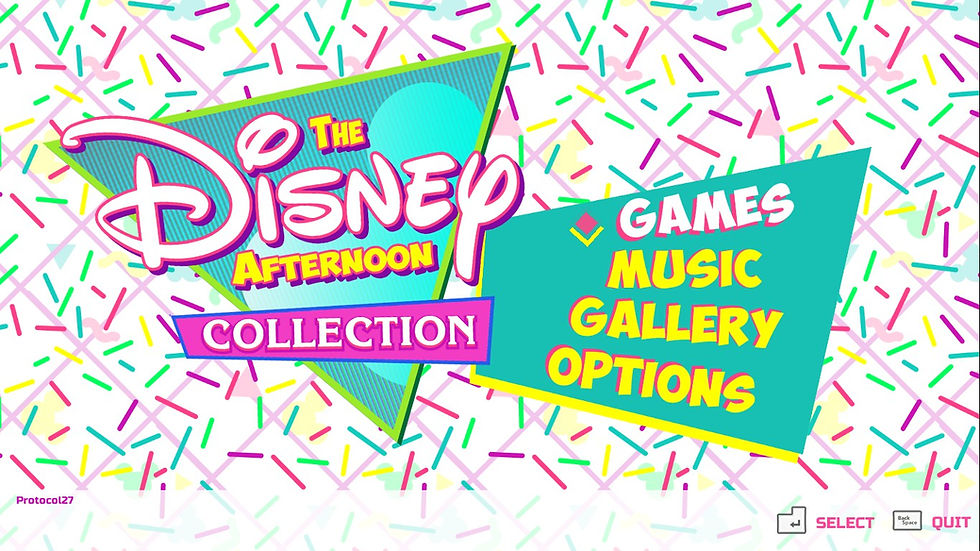
For each menu for each game, there is a medley track including its best tracks and main menu/prologue themes and they all sound great. “Duck Tales,” “Duck Tales 2,” and “Darkwing Duck’s” medleys being especially catchy
The collection also has three different visual modes that change the visuals of the games to give a more nostalgic or cleaner feel. From no filter, to a monitor filter, and a T.V. fitler.
There is also widescreen mode, banner mode, and original aspect ratio mode for each game. The collection does a wonderful job of recreating the original NES experience, while crisping up the visuals looking for a more modern experience.
The collection includes a music player to listen to the songs of each game, which is a neat addition. Although, it is disappointing there’s no loop option as the songs play one after another. How am I supposed to impress my friends if I can’t loop the “DuckTales” NES theme on loop forever?
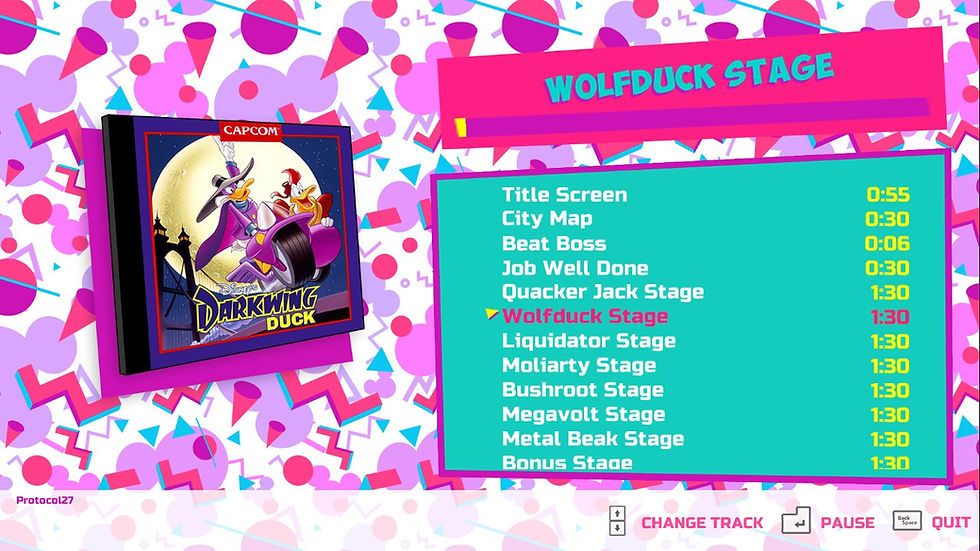
The collection also has galleries for official art, box art, how Disney characters were transferred to 8-bit, and cut content. While it isn’t much, it gives some nice background information for fans of the games.
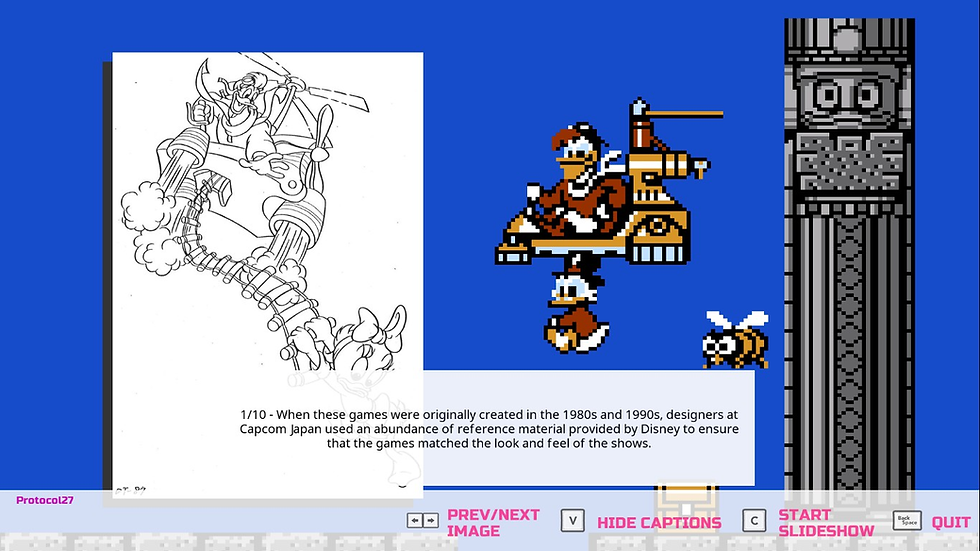
As for the games themselves, there is a rewind function to correct any mistakes/redo a part without starting at the beginning/losing a life. It’s a cool feature but I do wish there were a way to disable it completely, so I don’t accidentently trigger it. I also wish there were a fast forward function since these games can get excruciatingly slow sometimes.
Players can also save the game and load their save, which is handy if your house is on fire and you don’t want to lose your progress.
There is also Time Attack and Boss Rush mode for each game. Boss Rush has the player fighting all the bosses for said game one after another with infinite lives. Time Attack is replaying the game but with no rewinds and as fast as possible.
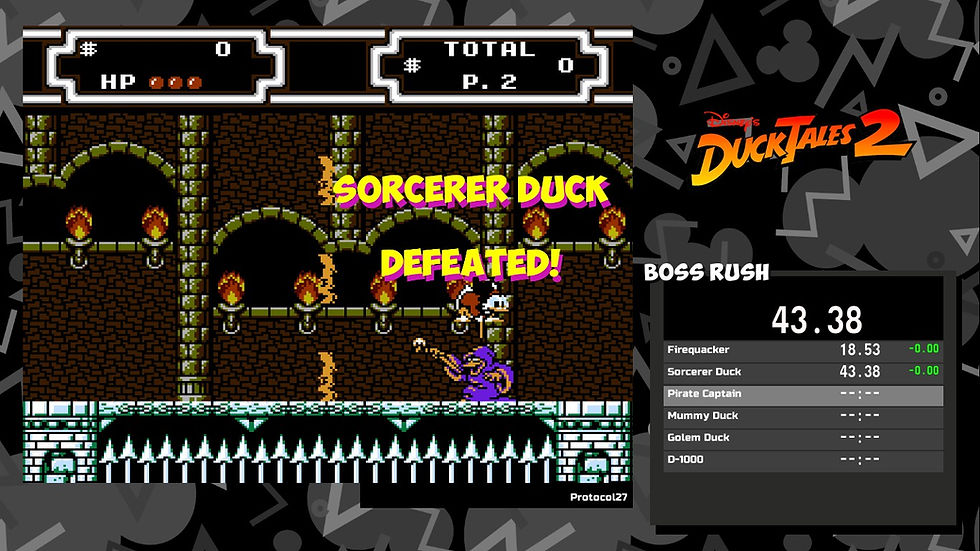
There are respective leaderboards for both modes, the lower the time, the higher the player places on the leaderboard. Other player’s tries at the modes can be challenged and even watched. It’s a wonderful addition to the collection and adds more replay value.
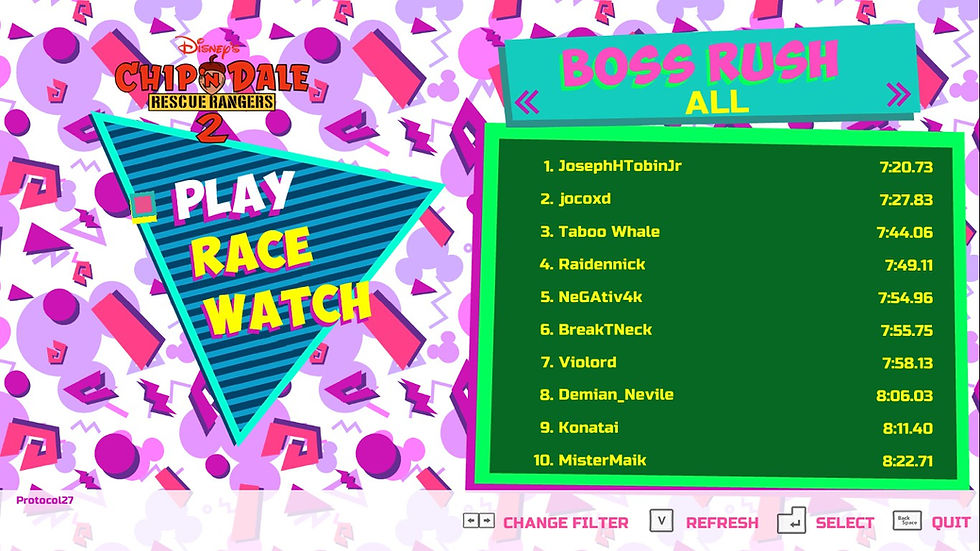
Finally, all the games run well. There was slowdown but it’s hard to tell if it was the collection or the games themselves, but regardless, it only lasted momentarily.
The collection aspects of “The Disney Afternoon” are good. It nails the presentation and has some neat extras. While it lacks things such as fast forward and a better music player, what it has more than makes up for what’s missing.
However, no matter how good a collection looks and feels, the games will always be the most important aspect. Collections like this need games with substance and of good quality.
8-Bit Beauties
For the sake of cutting out redundancy, let me just put all my praises for the presentations of each game here. Those praises being the visuals, animations, and music are great.
Both "DuckTales" games nail the adventure vibe with exotic but intriguing locations. Chip ‘n Dale: Rescue Rangers 1 and 2 has a lot of locations where you feel like a small toy exploring giant places, with the sequel looking amazing for the NES.
“TaleSpin” gives amazing scale when high up in the air. “Darkwing Duck” nails the night streets and superhero style the game is going for.
The visuals are all nice for the NES. Same goes for all the good animations.
The music is also catchy. It’s not all perfect as some tracks are duds, but when they’re good, they’re GOOD. The Moon theme from “DuckTales” being iconic. My personal favourite track from each game are (in order of the games in the collection): The Moon, Zone F, H & I, Jungle, Bushroot, Bermuda, and Area H. “Darkwing Duck” and “DuckTales 2” had my favourite soundtracks overall.
There are so many amazing tracks but also too many to list. The sound overall is great.
DuckTales 1 and 2 (A & A+)
One thing to make clear before getting into this duo is that I’ve grown up playing “DuckTales 2." I'll do my best to not be biased, but my bias might leak here and there.
“DuckTales” and “DuckTales 2” follows Scrooge McDuck and his nephews finding treasure all over the world. They’ll need to make enough money to get the good ending(s). The player can choose whatever order they wish to play the levels in.
Scrooge will use his pogo stick to bounce, his golfclub to try to destroy walls/grapple onto things (ex. Hooks in “DuckTales 2”) to traverse the platforming challenges ahead with his three hit points. In the second game, Scrooge can pull items to open paths or get to places.
The first game requires pressing down mid-jump and then holding B to pogo jump, which is awkward. In the sequel, pressing down isn’t required.
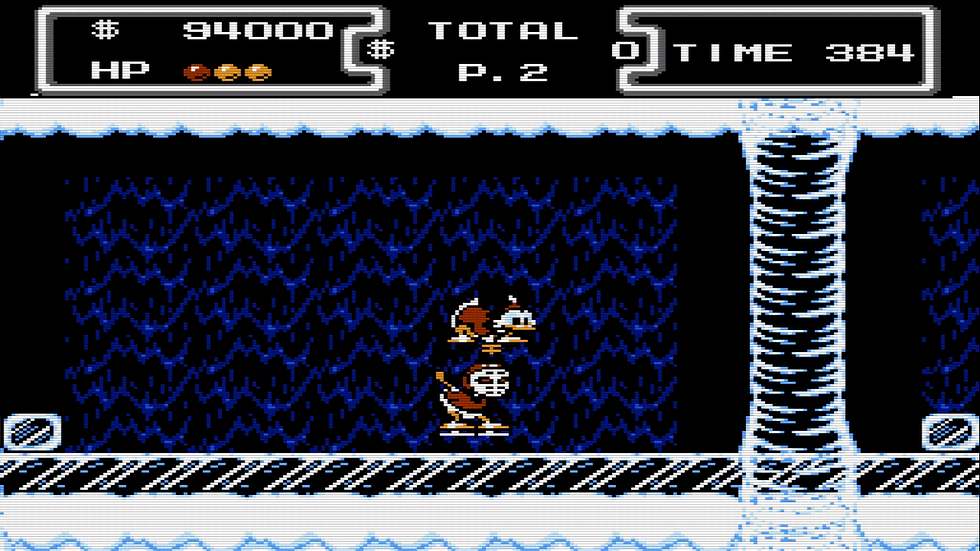
In the first game, upgrades like a hit point increase are found within the level. “DuckTales 2” has something similar with finding upgrades, while health upgrades are bought in the shop with collected money.
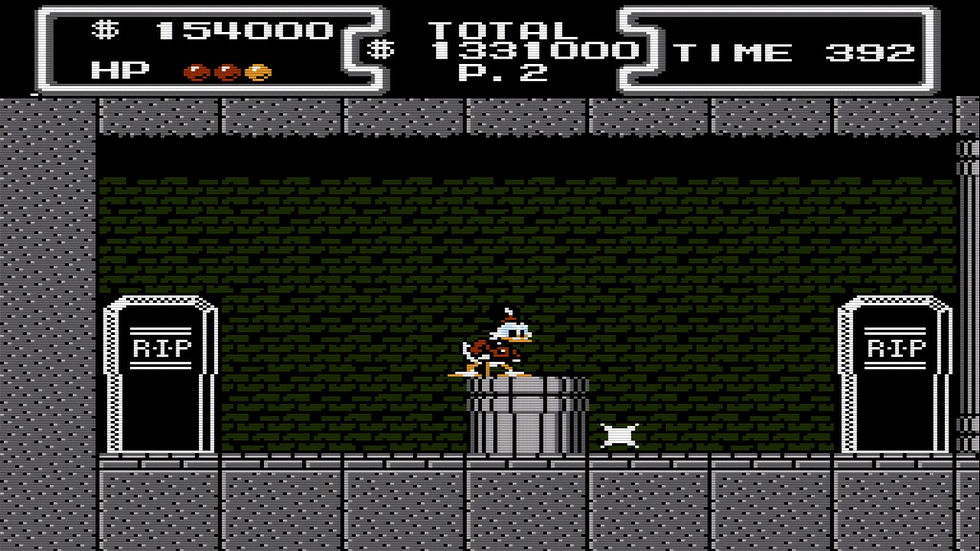
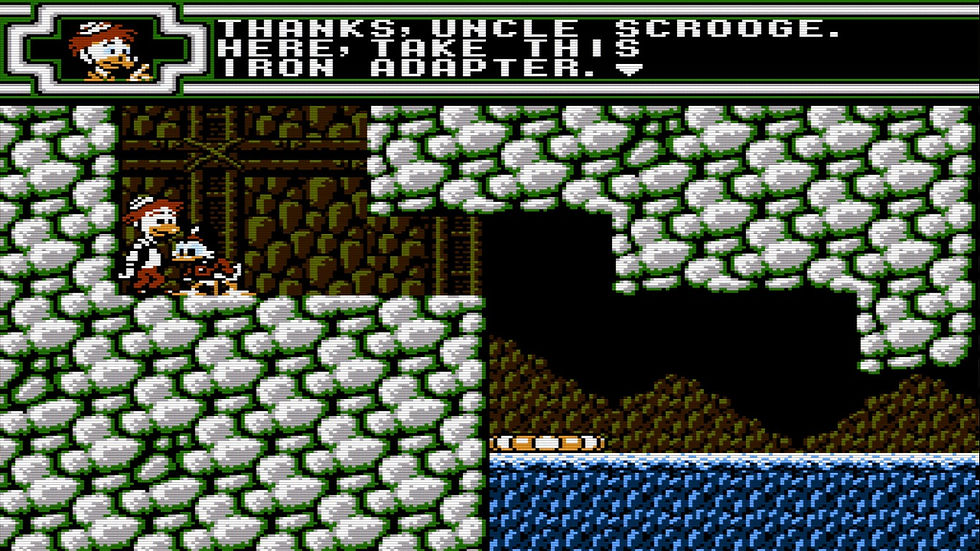
It all works and controls beautifully. The levels are all well-designed and challenging without ever feeling unfair. The pogo jump is a great mechanic to achieve good heights, but the game also balances it well.
Some levels limit the pogo jump with obstacles like snow in the Himalayas level in “DuckTales.” The mechanics are great.
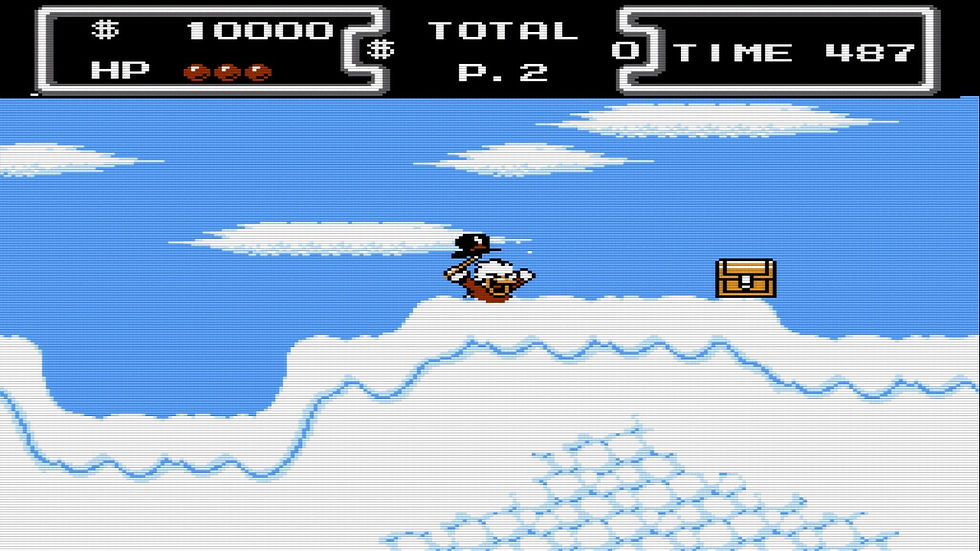
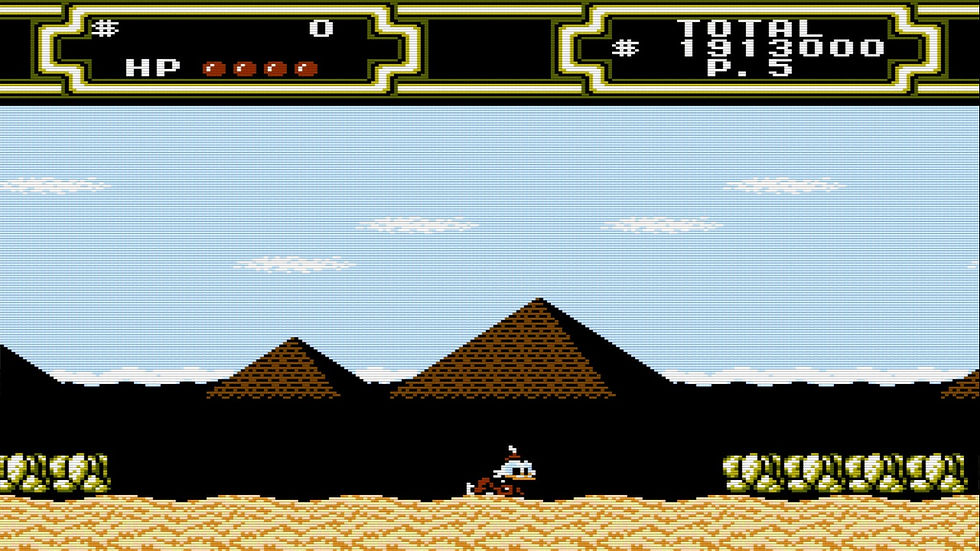
The best element of the “DuckTales” games is how they reward exploration. There are secret passages with giant treasure chests and valuables. Areas with seemingly nothing can have hidden items spawn when you go there. It’s very satisfying to find these extra goodies.
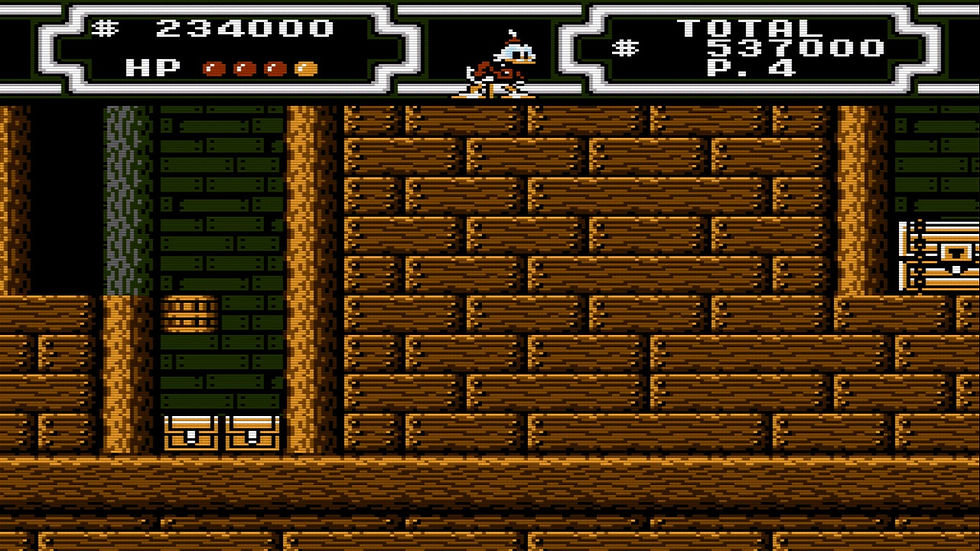
That’s not to say they don’t have shortcomings though. “DuckTales” requires the player to revisit the Transylvania stage three times and the game has an unnecessary time limit. “DuckTales 2” can have some annoying parts such as, what I dub it, breakable block hell where multiple blocks must be broken with the golf club.
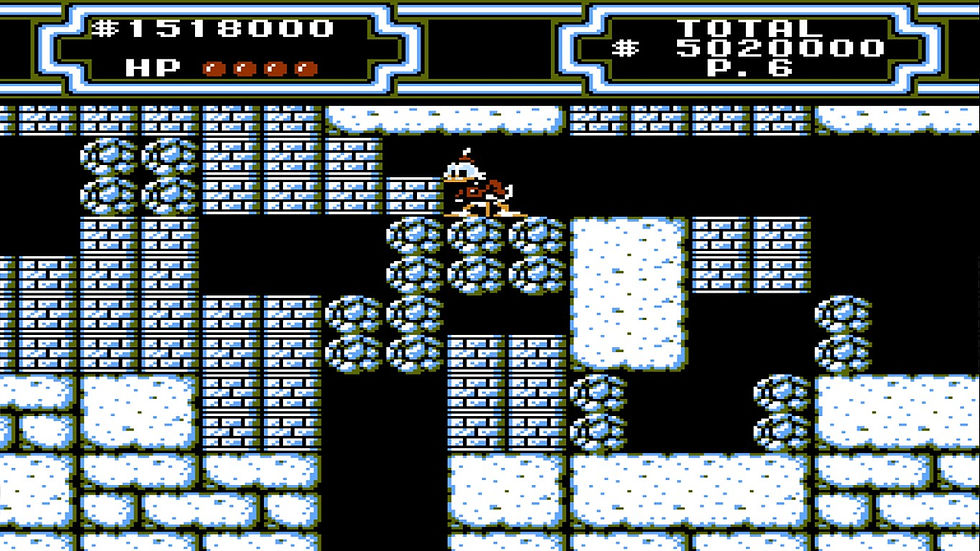
The golf club is slow with breaking blocks too, which normally isn’t a problem until this part. It just makes this whole part slow and tedious.
The bosses for both games are also easy with not much challenge to them. Very few are noteworthy.
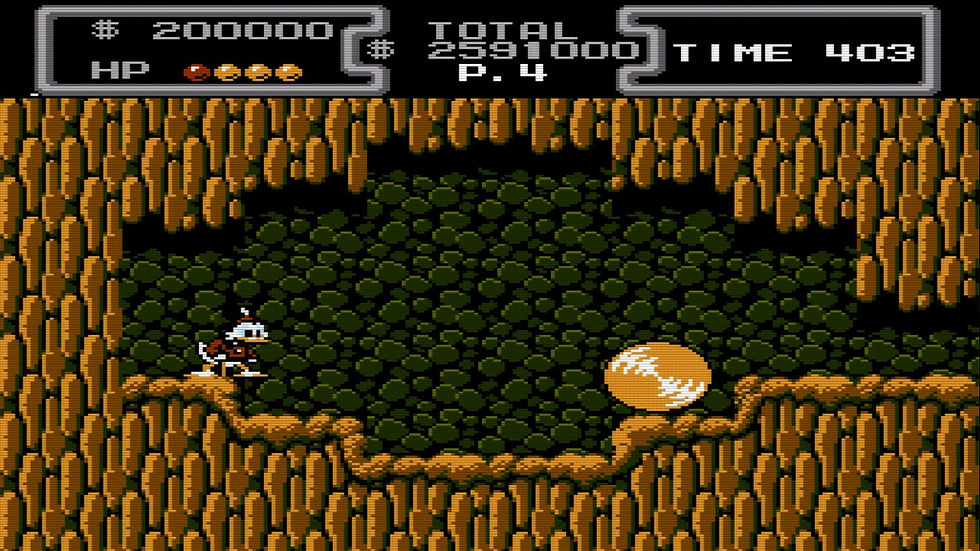
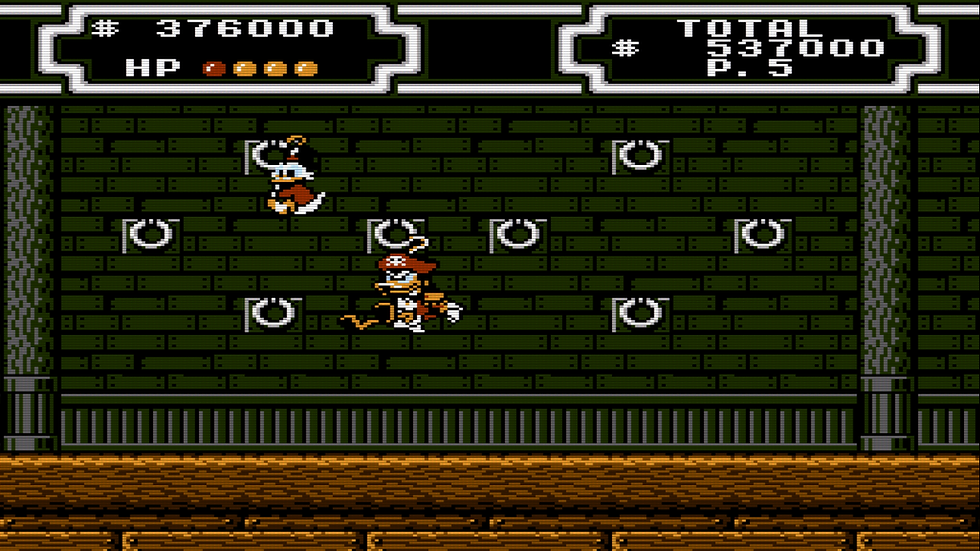
Both games still hold up well though and stand the test of time. They’re well-balanced and fun. I believe “DuckTales 2” is slightly better but that could be nostalgia talking, both get a big recommendation from me.
Chip ‘n Dale: Rescue Rangers 1 and 2 (A- & A)
“Chip ‘n Dale: Rescue Rangers” is about Chip and Dale stopping Fat Cat and his evil schemes. The first game’s story is nothing special, but the sequel has a lot of cutscenes, which is genuinely cool, especially for the time. Although, they can be a pain to skip since you can only skip one line at a time.
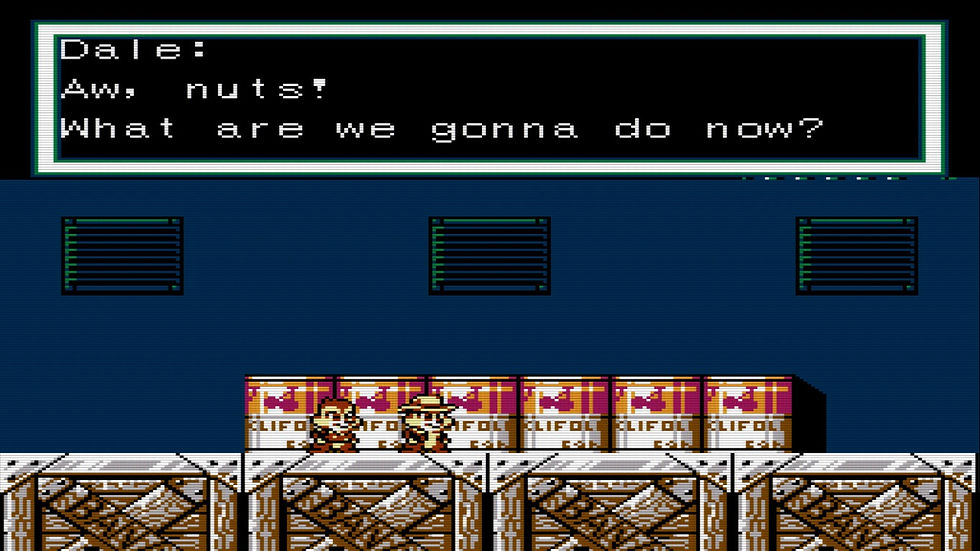
The first game has an overworld where levels can be chosen, some levels can be skipped if the player chooses to. The second game has linear progression for the most part, but at one point, three levels can be chosen in any order the player wishes. Both systems work well.
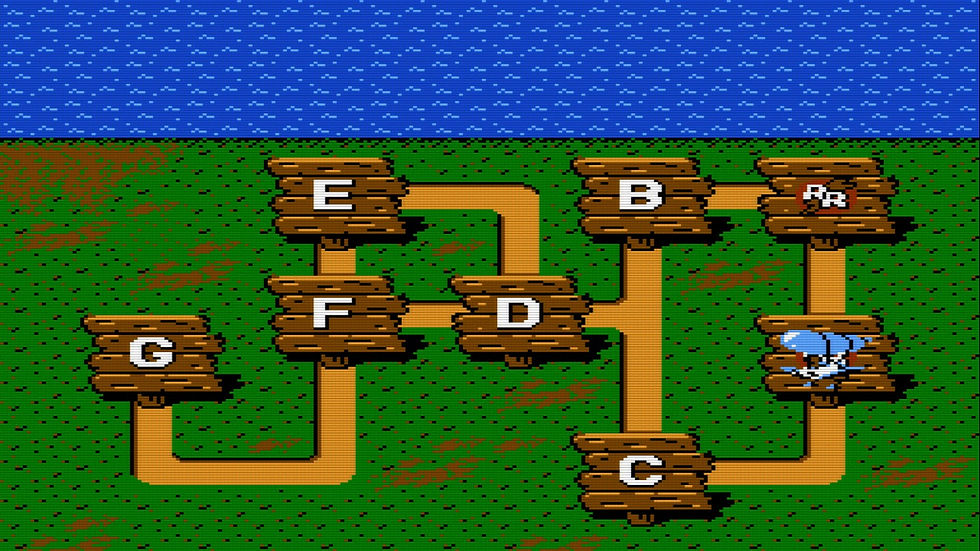
To complete levels, items, such as boxes, must be thrown to thwart the enemies. Boxes can also be hidden in to protect Chip/Dale and defeat enemies that approach them. Apples, while bigger, do limit the character’s jump.
There’s also a unique throwable item that can be found but only once in each game. One example is a baseball in the first game which has unlimited use.
The box throwing and boxes as a whole works well. It’s fun, it’s satisfying, controls well, and effective. The levels have great design too to compliment the box-throwing mechanic.
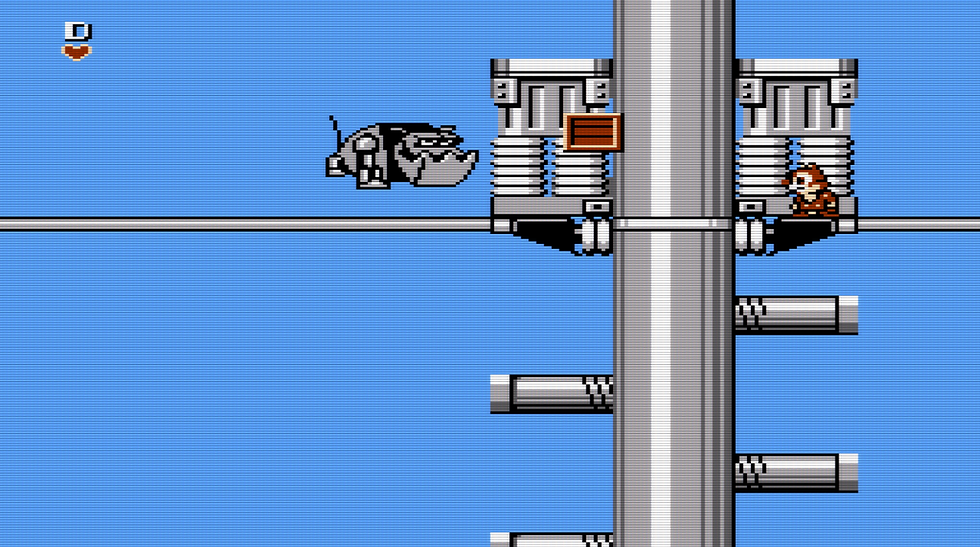
It does make the bosses a bore though. In the first game, a ball always spawns, and the bosses have simple patterns. In the sequel, the bosses are more interesting as their own projectiles are spawned/boxes to throw spawn but are agonizingly slow.
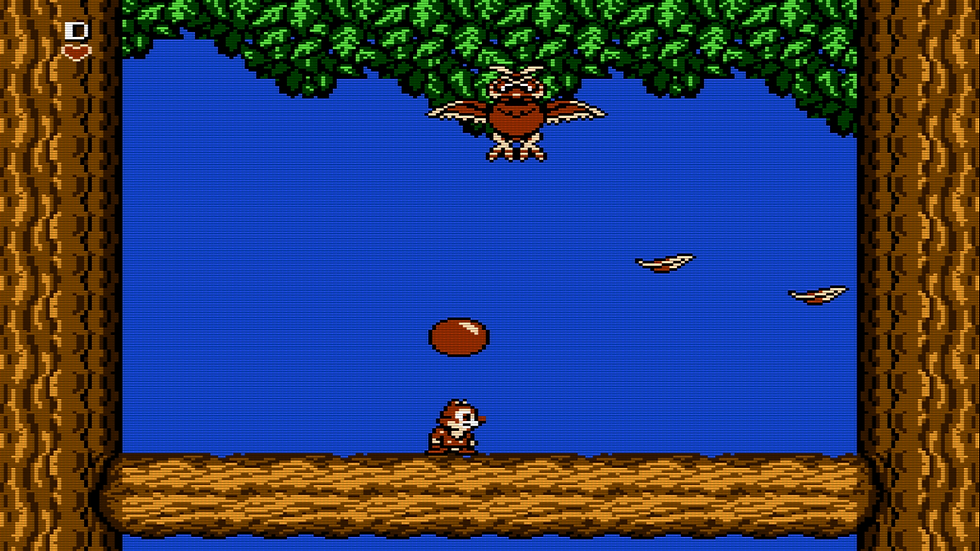
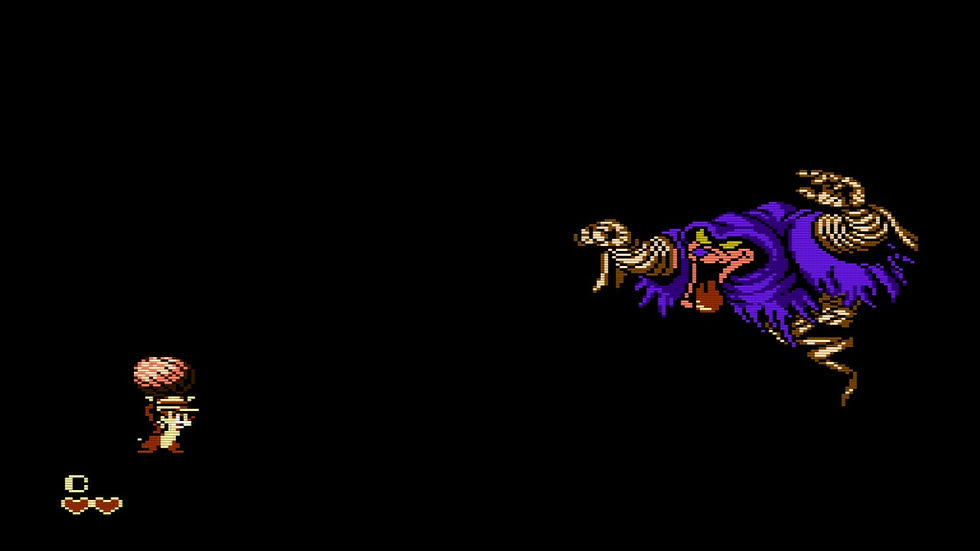
The first game has flower icons as a collectible while the second game has Rescue Ranger Plaques as the collectible. It's possible the flowers seem something in the context of the origina lcartoon, but I've never seen it, so I wouldn't know.
Collecting 100 flowers gives a one-up. Collecting 50 of the plaques however gives an upgrade, such as additional health, making them very rewarding to get in comparison to the flowers.
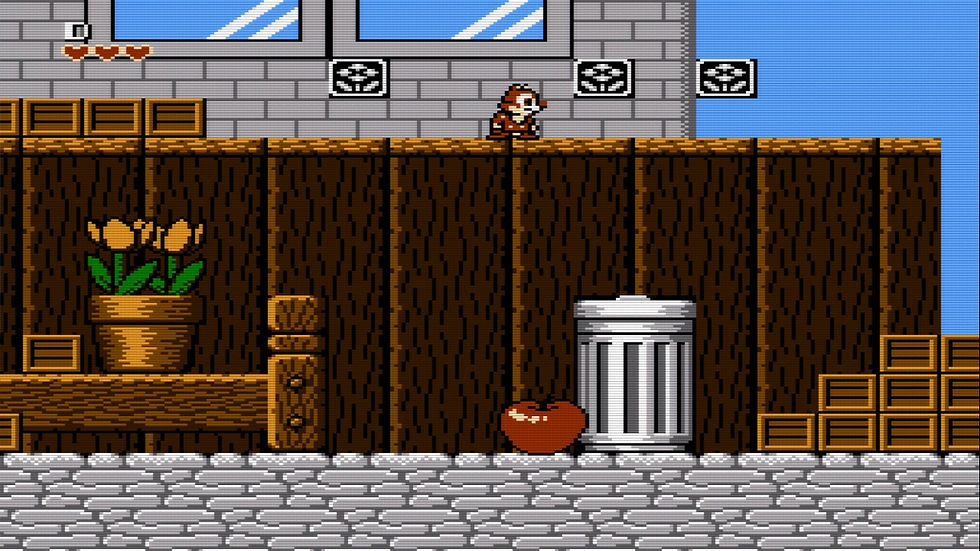
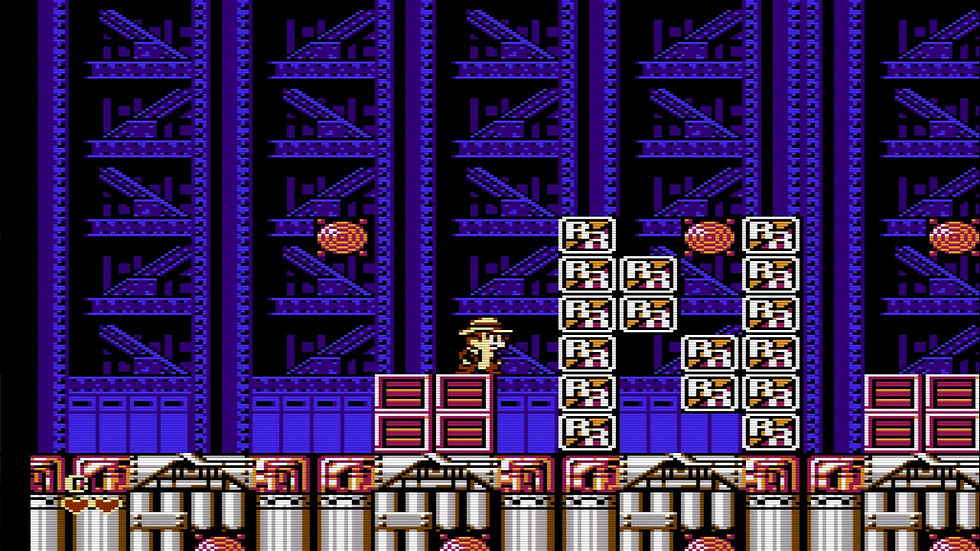
The first game also has Zipper, a member of the Rescue Rangers, as an invincibility powerup who also homes in on enemies and defeats them. He's also the best invincibility powerup I've ever seen in a game.
How did they make a fly scary?!
There are also bonus stages at the end of the stages. In the first game, it’s picking up boxes out of eight to get some additional items like a one-up. In the sequel, the player throws an item into the air as items pass by, if an item is hit, it’s collected. There’s only one chance to throw. The former is meh, while the latter is more rewarding due to the risk vs. reward element.
The sequel is also more forgiving, such as giving Chip/Dale healing items in a transition. Which is neat, although a bit unnecessary given the difficulty of the game is just right.
The first “Chip ‘n Dale: Rescue Rangers” game is good while the sequel is great. Both games are clever and unique in their design, ultimately held back by their bosses.
TaleSpin (C)
“TaleSpin'' goes for the shoot em’up genre as Baloo from “The Jungle Book '' traverses many areas in his plane. Baloo shoots enemies to deliver packages and pick up packages, having three health points on his plane.
Baloo can use the money he collects to buy upgrades like more speed or an extra hit point. Buying upgrades can be nice and there’s no real complaints with it.
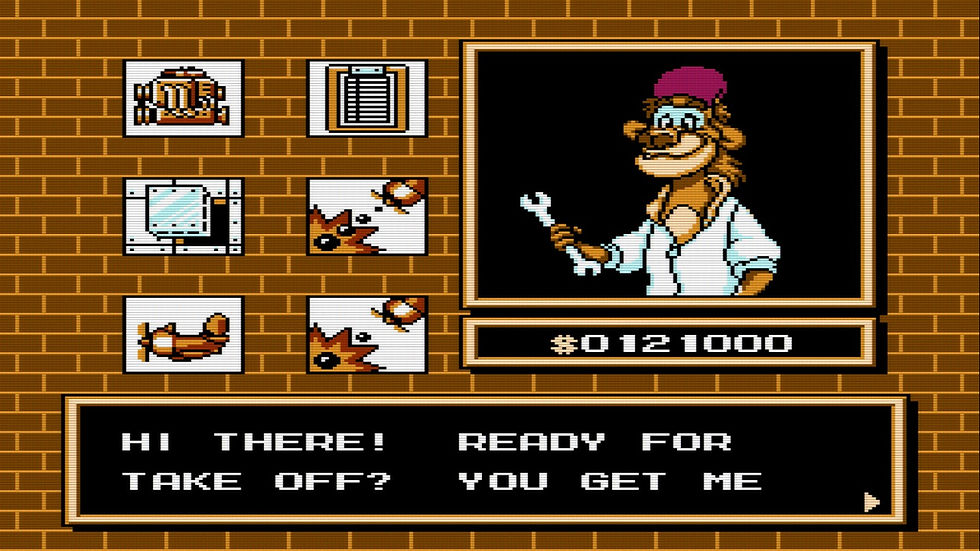
Baloo can go right, up, down, and left. And by left I mean...
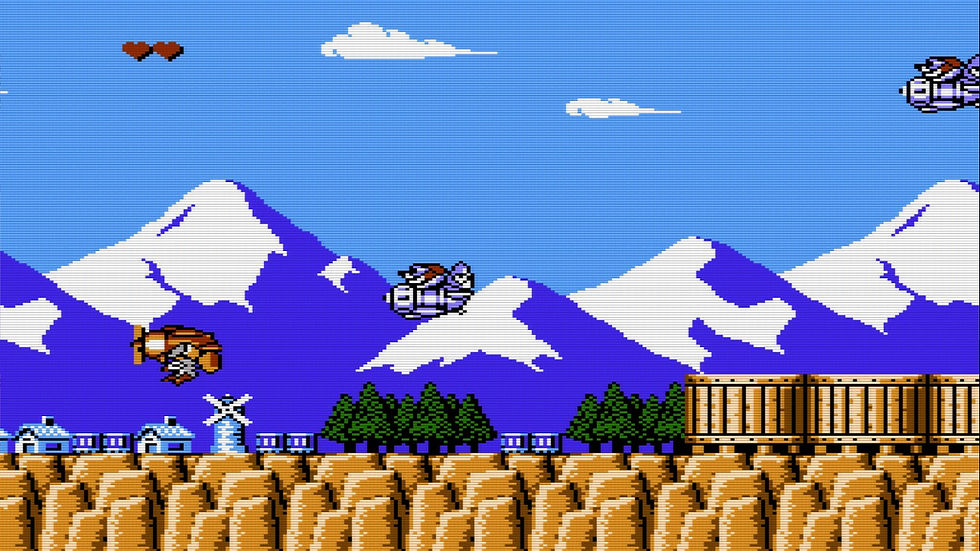
Advanced left. Baloo can turn his plane 180 degree, scrolling the screen left. While this mechanic is nothing new, it’s the coolest thing about the game.
Being able to go back lets the player make up for any mistakes/pick up collectibles they missed or deal with enemies behind them. Some levels have parts designed with going backwards in mind and it’s well-designed.
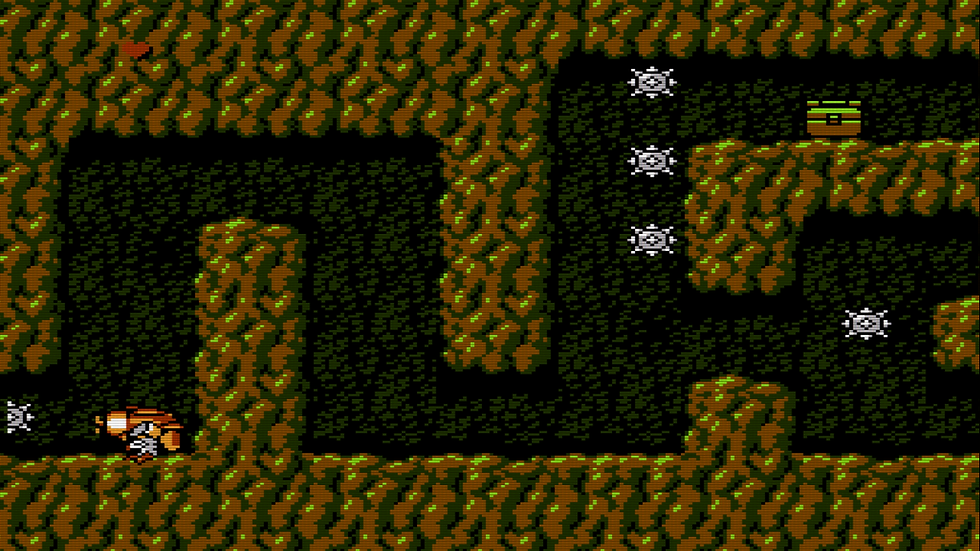
It’s a shame the rest of the level design is dull though, as it doesn’t have many interesting obstacles like this nor remotely interesting enemies. Barely anything sticks out apart from the visuals and music.
The other unique aspect is that Baloo’s plane tilts at an angle if he’s going up or down with his plane. This also makes the projectiles shoot southeast and northeast (if facing right).
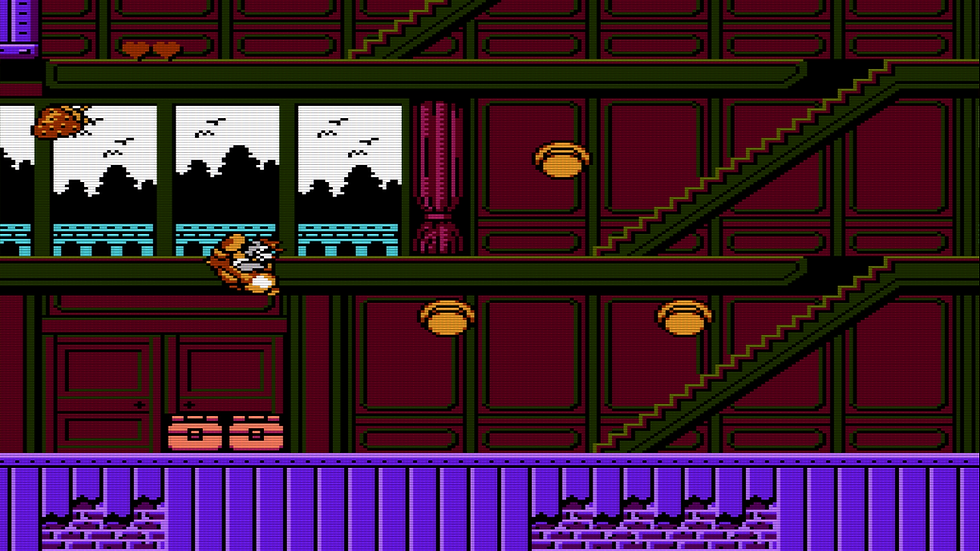
I’m not too well-versed with shoot em’ups but I find it’s important for the projectiles to always go straight unless a powerup is picked up. The tilting of the plane is a liability that can cause shots to be missed and for Baloo to be hit.
The bosses themselves can range from good to downright bad. The final boss’s first phase is good, but the second phase is jarringly hard. Especially due to having to beat both phases in one life, otherwise the player has to start all over from the first phase.
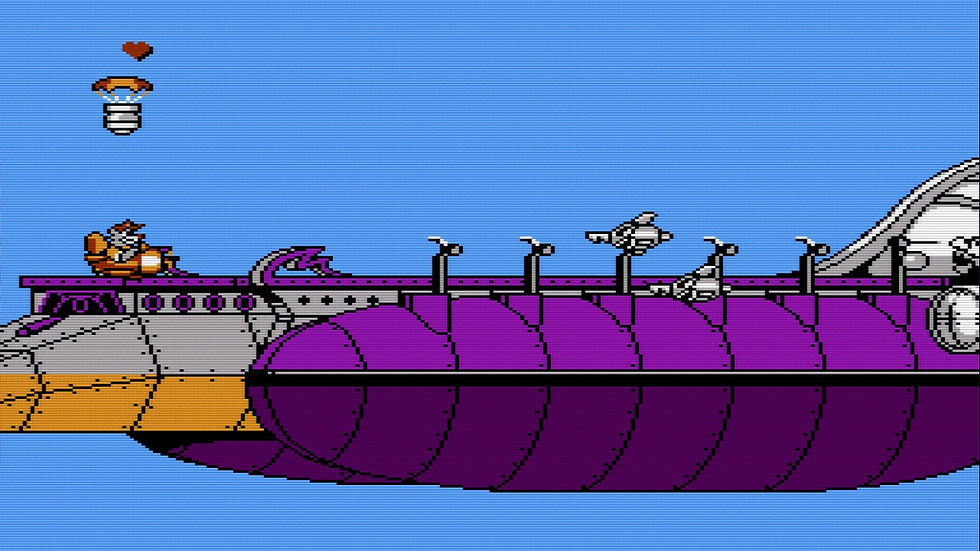
The game itself can feel lacking in some areas, such as lacking power-ups, an invincibility power up, and different weapon types. The other games in the collection have these, making “TaleSpin” feel barebones in comparison.
“TaleSpin” is fine, it has some cool ideas and can be fun. However, it feels lacking and frustrating for the wrong reasons.
Darkwing Duck (D)
“Darkwing Duck” is very similar to the "Mega Man" series. The player chooses the stage order and traverses them with platforming challenges to defeat the bosses and reach the final boss of the game to save the world/city. Except with more ducks.
Darkwing Duck himself has a projectile attack that shoots in a straight line. Darkwing Duck can also duck and block projectiles with his cape and four hits. This works well and is complimented by the enemy placements for the most part.
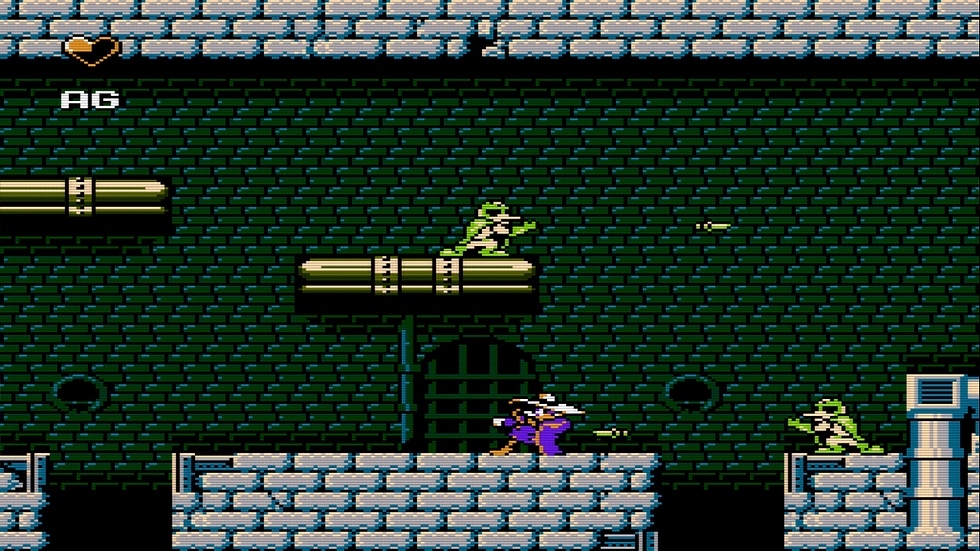
Two of the major mechanics in “Darkwing Duck” is the grapple mechanic and how weapons are found. I dislike both.
Now, on paper, the grapple is a cool idea, and it does work sometimes to make for some fun platforming as you grab onto platforms to ascend the level or cross gaps. However, it can be an absolute pain to use as grapples occur when you don’t want it to and is more of a hinderance then a benefit.
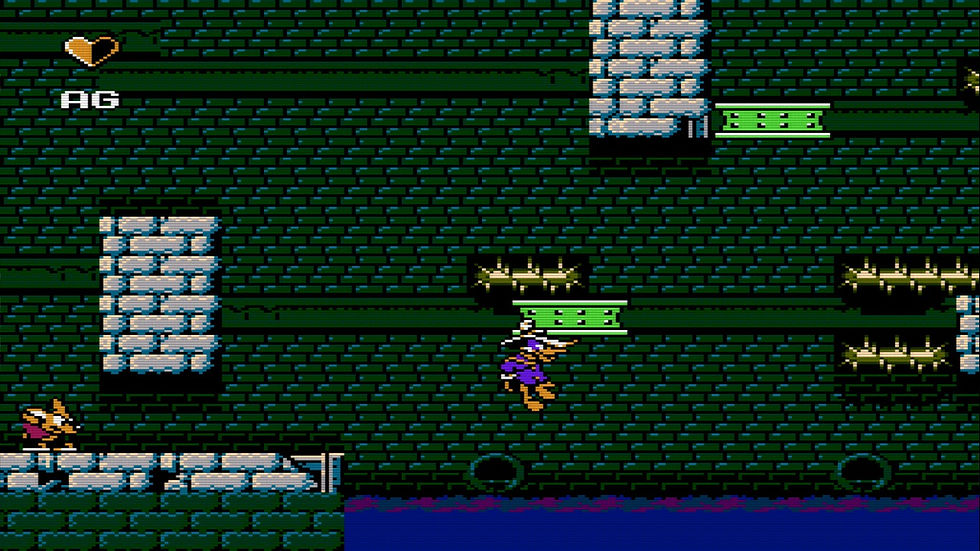
The first boss is especially excruciating because of this. Every time I want to go down to where the boss is, I grapple onto the ledge I’m trying to go down from, get hit, and die.
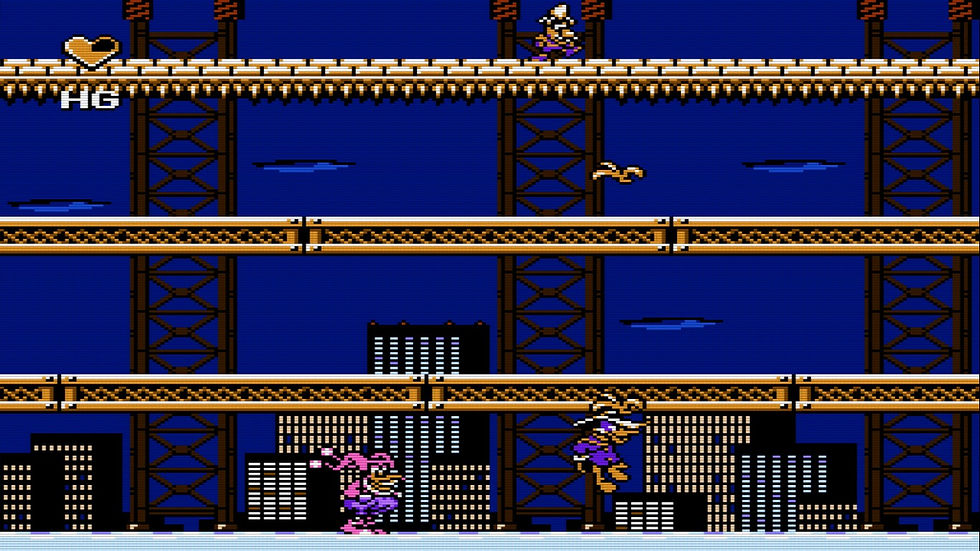
Secondly are the abilities scattered in the levels. There are three in total with limited ammo and only one can be carried at a time.
There is Arrow Gas, which is a slow but powerful arrow that sticks to walls to be, making it useable as a platform to stand on or to grapple onto. It’s useful as both a weapon and as a utility, but it’s also unfortunately the only useful one.
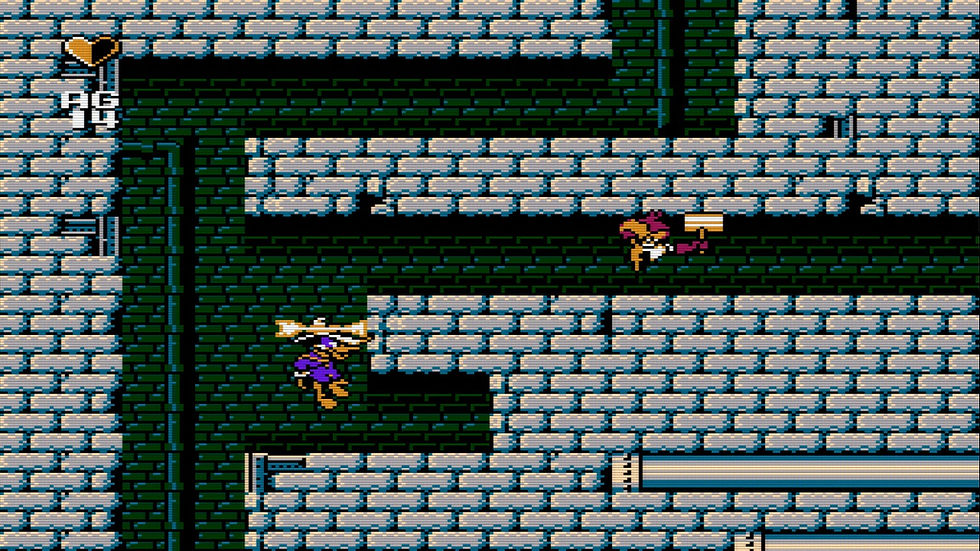
Thunder Gas shoots two projectiles up and down diagonally at the same time, although the angle of the projectiles makes it hard to hit anything at all. Heavy Gas launches a projectile overhead and when it lands on the ground, it releases two projectiles from both sides. It’s not horrible since it can help deal with enemies a ledge below, but it's too situational.
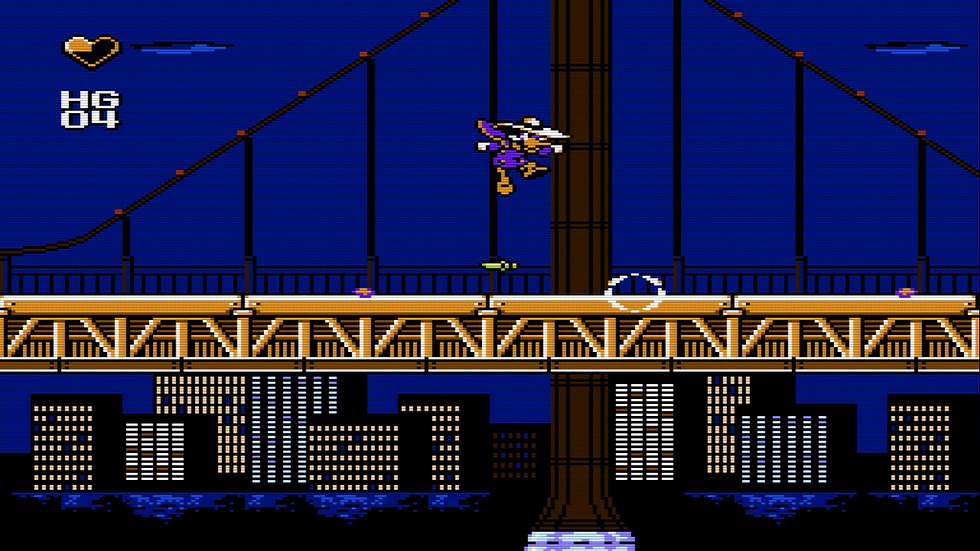
The bosses are also meh due to their repetitive nature and annoyances. There isn't a single boss I like in the game.
To me, “Darkwing Duck” comes off like a poor man’s "Mega Man" without the elements that make the "Mega Man" series amazing. For what it is, it works, and the concept is novel, but it falls flat in execution.
Conclusion (B+)
“The Disney Collection” is a fun package with four out of six good games on it, filled with a lot of charm in the collection’s presentation to boot. The collection does suffer from some shortcomings such as a lack of features, and with some titles being meh or bad.
I liked the collection for what it was, and I see myself coming back to it in the future. There is gold in this collection when you look past the bronze. Although, it’s best to get it on sale for around $6 like I did, since $26.99 is a lot for what you ultimately get.



















Comments